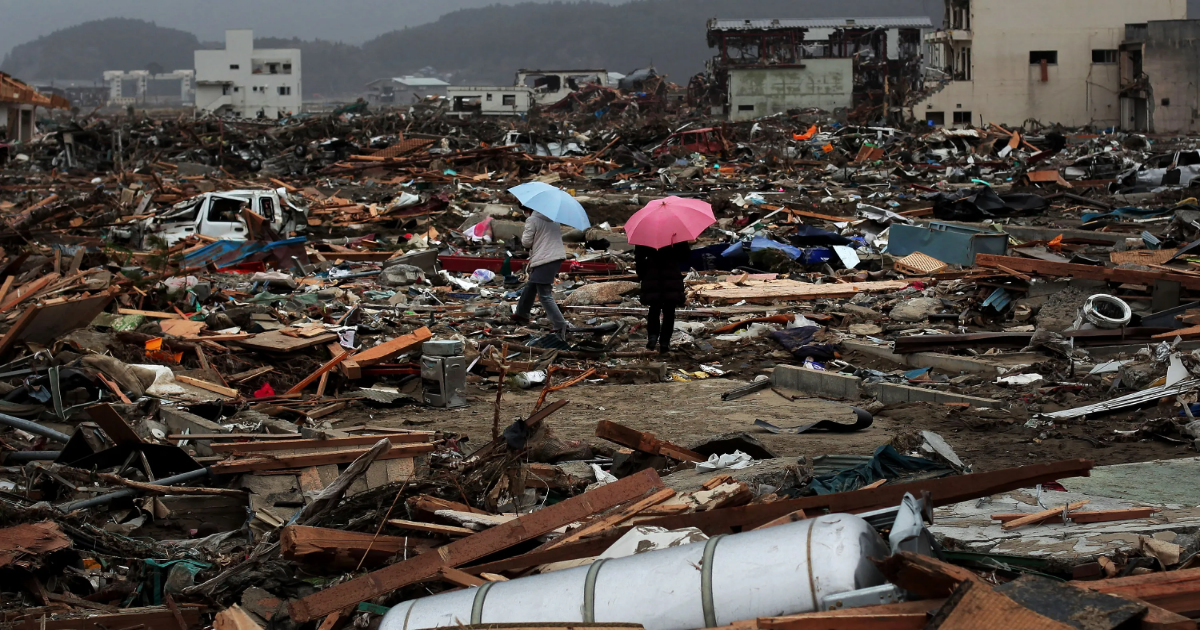
A catastrophic 7.7-magnitude earthquake that struck in Myanmar on Friday has caused buildings to collapse and killed over 100 people while authorities race to rescue people trapped in rubble.
Hundreds of people have been injured and authorities said the true death, number of injured and damage toll may not be known for some time. The quake also caused a skyscraper in Bangkok, Thailand, to collapse.
On the scale of earthquake magnitudes, anything over 7.0 is considered a major earthquake that can cause serious damage. Over 8.0 is considered massive and can destroy communities. At 7.7, the Myanmar quake was powerful enough to cause damage and devastation.
Here are the 10 largest earthquakes in world history since 1900, according to the U.S. Geological Survey:
10. Indian Ocean quake off coast of Sumatra: April 11, 2012
An 8.6 quake off the coast of Sumatra on April 11, 2012, was one of two quakes in the Indian Ocean that struck near Indonesia, felt across the islands of Sumatra and Java, and widely felt in parts of South and Southeast Asia
The first quake registered at a magnitude of 8.6 at about 3:38 p.m. local time. It killed two people and at least eight died from heart attacks attributed to the quake. A dozen more were injured in the Indonesian province Aceh. Just over two hours later, another quake of 8.2 magnitude was felt in the same region and even triggered a local tsunami.
9. Assam-Tibet earthquake: Aug. 15, 1950
An Aug. 15, 1950, earthquake caused destruction in India and Tibet with a magnitude of 8.6, recalculated from an earlier designation of 8.7. More than 1,500 people were killed, including hundreds who died days after the quake when a dam broke. The quake triggered landslides that wiped out whole villages.
8. Rat Islands earthquake: Feb. 4, 1965
An 8.7-magnitude earthquake struck near Rat Islands, a group of Alaskan islands within the Aleutian Islands, on Feb. 4, 1965, also triggering a tsunami. Damage was reported to structures from the impact of the earthquake and subsequent flooding, but no deaths were reported.
What does magnitude mean?: Earthquakes happen all the time, you just can’t feel them. A guide to how they’re measured
7. Ecuador-Colombia quake: Jan. 31, 1906
Near the coast of Ecuador on Jan. 31, 1906, an 8.8 quake caused a tsunami that killed between 500 and 1,500 people in Ecuador and Colombia. Its magnitude has been recalculated after being originally estimated at 8.2. The tsunami reached Hilo, Hawaii, over 5,000 miles away 12.5 hours later.
6. Chilean earthquake: Feb. 27, 2010
More than 500 people were killed and over two dozen were declared missing, another 12,000 were injured and hundreds of thousands of structures were damaged or destroyed in an 8.8 earthquake and tsunami near Quirihue, Chile on Feb. 27, 2010. The quake was felt across much of South America.
More than 800,000 people were displaced from their homes. The economic loss was estimated at $30 billion. The tsunami even reached San Diego, California, where it damaged boats docked there.
5. Quake near Kamchatka, Russia: Nov. 4, 1952
A 9.0 quake off the coast of the Kamchatka Peninsula, Russia, triggered a tsunami that caused serious damage and killed at least 4,000 people.
The tsunami made its way through the Pacific Ocean, causing up to $1 million of damage in Hawaii, where the waves destroyed boats and piers and killed six cows.
4. Japan earthquake and tsunami: March 11, 2011
The Great Tohoku Earthquake struck Japan on March 11, 2011, with a magnitude of 9.1 that also triggered a catastrophic tsunami that hit within 30 minutes of the quake. The tsunami disabled three nuclear reactors, causing a nuclear disaster. Hundreds of fires also broke out as a result.
More than 18,000 people died, including thousands never found but presumed dead, and over 6,000 were injured. More than 100,000 homes were totally destroyed and almost a million more were damaged, mostly due to the tsunami. Damage was recorded from the tsunami around the world, including in Hawaii, California, Peru, and the Galapagos Islands.
3. Sumatra-Andaman Islands earthquake: Dec. 26, 2004
A 9.1-magnitude earthquake and tsunami off the west coast of northern Sumatra on Dec. 26, 2004, killed more than 283,000 people and displaced over 1 million more across 10 countries in Asia and Africa.
“The tsunami caused more casualties than any other in recorded history and was recorded nearly world-wide on tide gauges in the Indian, Pacific and Atlantic Oceans,” the U.S. Geological Survey site said.
2. Great Alaska Earthquake: March 28, 1964
Also known as the Good Friday Earthquake, a 9.2 quake in southern Alaska and tsunami killed 131 people and caused over $2 billion in damage across the cities of Anchorage, Chitina, Glennallen, Homer, Hope and many others in Alaska. A J.C. Penney building sustained heavy damage and an apartment building collapsed in Anchorage, while the school system was devastated.
1. Valdivian Earthquake: May 22, 1960
The Valdivian Earthquake, or the Great Chilean Earthquake, is the largest on record. It measured in at a magnitude of 9.5. off the coast of Chile near Valdivia and Puerto Montt area.
At least 1,655 people were killed and 3,000 were injured in southern Chile; 61 died in Hawaii; 138 in Japan and 32 in the Philippines. The widespread damage to homes left about 2 million people homeless in the wake of the earthquake and tsunami. Damage from the tsunami was recorded in Hawaii, Japan and the West Coast of the U.S.
